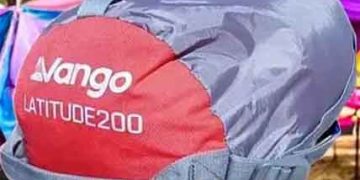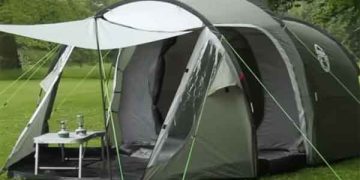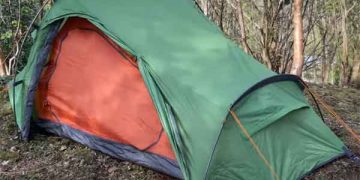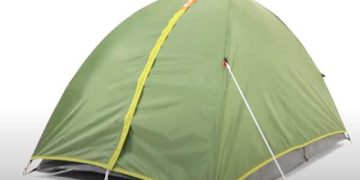I know that feeling: the thrill of the plan followed by the practicality of the pack. The cornerstone of it all is your sleeping bag—it has to be a Goldilocks solution of warmth, packability, and value. I have had my favourite, but recently I’ve seen the Vango Latitude 200 being consistently recommended.
It’s a staple for a reason, but a perennial favourite isn’t always the perfect fit for every person. In this review, I’ll draw on my direct experience with this model in varied conditions to answer the critical question: Is the Vango Latitude 200 the right reliable companion for your specific needs?
Unpacking the Vango Latitude 200: What Makes It Tick?
Before we get into the nitty-gritty, let’s establish what this sleeping bag actually is. The Latitude 200 is a synthetic, mummy-style bag designed for what the outdoor industry calls “3-season” use. In plain English, that means it’s built for spring, summer, and autumn adventures, where temperatures aren’t dipping into the deep freeze.
Its key selling points are its weight (or lack thereof) and its pack size. Vango uses a specific type of hollow fibre insulation called Superwarm to achieve a good warmth-to-weight ratio. This synthetic fill is also hypoallergenic and, crucially, retains its insulating properties even if it gets a bit damp—a classic advantage of synthetic over down insulation in the UK’s often unpredictable climate.
The bag features a snug-fitting mummy hood with a drawcord to seal out drafts, a full-length two-way zip (so you can vent your feet on warmer nights!), and an anti-snag zip guard to keep the fabric from getting caught. It’s a thoughtfully designed package aimed squarely at the casual camper and entry-level backpacker.
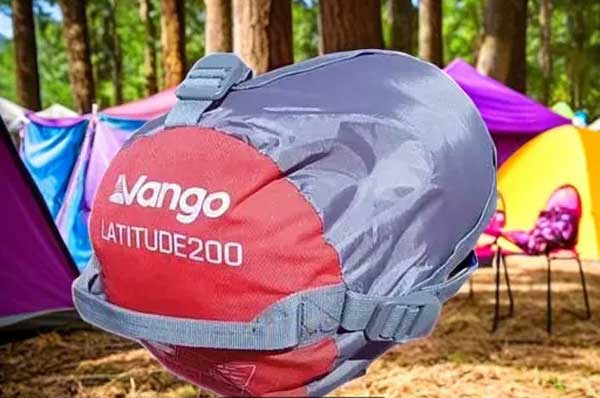
The Magic Number: Understanding the “200” and Comfort Ratings
This is where things can get confusing. That “200” in the name doesn’t refer to the gram weight of the insulation, but rather to its ‘Comfort’ rating. According to the European EN 13537 standard, which rigorously tests sleeping bags, the Latitude 200 has a:
- Comfort Rating: +6°C
- Limit Rating: +1°C
- Extreme Rating: -15°C
What does this actually mean for you? The Comfort rating (+6°C) is the lowest temperature at which a standard woman can expect to sleep comfortably. The Limit rating (+1°C) is the lowest temperature at which a standard man can sleep without waking up shivering.
For a typical weekend away in the UK or similar climates, a comfort rating of +6°C is a great sweet spot. It means this bag will be cozy for most people from about 10°C down to 6°C. If you’re a colder sleeper (like me!), you’ll want to pair it with a good sleeping bag liner, especially if the forecast hints at temperatures dipping towards that +1°C limit.
How Does It Stack Up? It’s Poistion In The Market
The market for 3-season synthetic sleeping bags is crowded. So how does the Vango Latitude 200 hold its own against competitors? The best way to see this is with a direct comparison.
Let’s put it side-by-side with another popular option, the Eurohike Trek 200, and a classic from a premium brand, the Mountain Equipment Helium 250. This should give us a clear picture of its position in the market.
| Feature | Vango Latitude 200 | Eurohike Trek 200 | Mountain Equipment Helium 250 |
|---|---|---|---|
| Best For | Backpackers & Hikers | Casual Car Camping | Serious Backpacking & Alpine Trips |
| Fill Type | Hollow Fibre (Superwarm) | Hollow Fibre | PrimaLoft® Silver Insulation |
| Comfort Rating | +6°C | +5°C | +2°C |
| Pack Size | 19cm x 30cm ⭐ | 23cm x 38cm | 22cm x 38cm |
| Weight | 1.25kg ⭐ | 1.95kg | 1.10kg ⭐ |
| Approx. Price | Mid-Range (££) | Budget (£) | Premium (£££) |
*Table: A quick comparison of popular 3-season synthetic sleeping bags. Data sourced from manufacturer specs and retailer sites.*
As you can see, the Vango Latitude 200 carves out a fantastic middle ground. It’s significantly lighter and more packable than the budget-friendly Eurohike, making it a no-brainer for anyone who has to carry their gear any distance. While the premium Mountain Equipment bag is slightly lighter and warmer, it comes at a much higher cost, often double or triple the price.
The Latitude’s standout feature is its incredibly compact pack size. Squashing down to a loaf-of-bread-sized 19x30cm is a huge win. This means it won’t dominate your backpack, leaving precious room for food, a cozy jumper, and that extra bag of coffee. For a weekend away where space is at a premium, this is arguably more important than shaving off a mere 150 grams in weight.
The Dynamic Duo: Your Weekend and the Latitude 200
Okay, so the specs are good. But what’s it actually like to use on a typical weekend trip? Let’s break it down by scenario.
The Festival Goer:
You’re navigating crowded fields, carrying your tent, your clothes, and probably a bag of tinnies. The last thing you need is a bulky sleeping bag. The Latitude 200’s pack size is its superpower here. It stashes easily in a crowded car boot or at the bottom of a duffel bag. The synthetic fill is also resilient—if a spilled drink makes your tent a bit damp, the bag will still keep you warm, which is more than can be said for down.
The Spontaneous Camper:
You’ve booked a campsite for two nights. You’ll be parking right next to your pitch. Here, the Latitude’s balance of comfort and convenience shines. It’s easy to unroll and fluff up quickly after being compressed. The two-way zip is perfect for those milder evenings where you might want to stick a foot out to regulate temperature. It’s a hassle-free, reliable choice that just works.
The Lightweight Hiker:
You’re planning a weekend trail, covering serious distance. Every gram and every litre of space in your pack counts. While there are lighter bags out there (like the Helium 250), they command a premium price. The Latitude 200 offers an exceptional compromise. At 1.25kg, it’s light enough not to be a burden, and its tiny packed volume is a gift for efficient packers. For summer and early autumn hiking in the UK, its temperature rating is spot-on for most.
A Note on Real-World Performance
No piece of gear is perfect. The trade-off for the Latitude’s fantastic packability is that the insulation is quite thin. This means it doesn’t have the plush, lofty feel of a heavier bag or a down bag. Some might find it a bit “rustly” initially, though this tends to soften with use. As with any synthetic bag, its long-term durability and ability to loft after repeated compression cycles won’t match high-end down, but for the price and intended use, its performance is more than adequate.
Vango is a trusted name in the outdoor world, and the build quality of the Latitude reflects that. The stitching is solid, the zip is robust, and the overall finish feels like it will last for many weekends to come. For a deeper dive into technical specs and user reviews, outdoor gear retailers like Ellis Brigham often have detailed product pages and verified customer feedback that can provide further insight.
The Final Verdict: Who Should Zip This Bag Up?
The Vango Latitude 200 sleeping bag isn’t a specialist piece of ultra-lightweight mountaineering kit. And that’s its greatest strength. It is a brilliantly executed, all-rounder designed for the realities of most people’s adventures.
You will love the Vango Latitude 200 if:
- Your adventures are primarily in spring, summer, and autumn.
- You value a small pack size above almost everything else.
- You’re a backpacker or hiker who needs a reliable, lightweight bag without the premium price tag.
- You camp in often-damp conditions where synthetic insulation’s performance is a safety net.
You might want to look elsewhere if:
- You exclusively camp in winter or in sub-zero temperatures (look for a bag with a much lower comfort rating).
- You are an ultra-light gram counter willing to pay a premium for the absolute lightest gear.
- You strongly prefer the soft, luxurious feel and longevity of a down sleeping bag.
Ultimately, the Vango Latitude 200 earns its reputation as a classic for a reason. It understands the assignment: a weekend away is about freedom, fun, and simplicity. Your sleeping bag shouldn’t get in the way of that. It should be a trusty, compact, and warm cocoon that lets you focus on making memories, not fussing with gear.
So, for your next dynamic weekend escape, the Latitude 200 might just be the perfect companion you zip up and forget about—until you’re cozy, warm, and drifting off under the stars.
